Summertime Sweat: Kitesurfing is the new way to ride waves to a fitter body

You never forget your first wave: The feeling of your feet on the board. The pull of the wave underneath you. The bird’s eye view of the ocean.
And, for more and more adrenaline-seekers, kiteboarding is the perfect way to get that wave-riding high. One of the fastest-growing water sports in the world, kiteboarding combines surfing, windsurfing, snowboarding, paragliding, skateboarding and the kite-flying you enjoyed as a kid, into one high-octane experience. Also called kitesurfing, it uses the power of the wind—and kites spanning 30 feet or more—to pull athletes up and on top of the water, which they ride while standing on a narrow board that resembles a snowboard.
• Summertime Sweat: Trail running is the workout your summer is missing
That wind gives kiteboarders a kind of freedom that you just can’t get in other water sports. After all, unlike with surfing, you don’t have to be on top of a wave to stay on top of the water when kiteboarding. The wind—and some skilled maneuvering with the kite—keeps you constantly afloat.
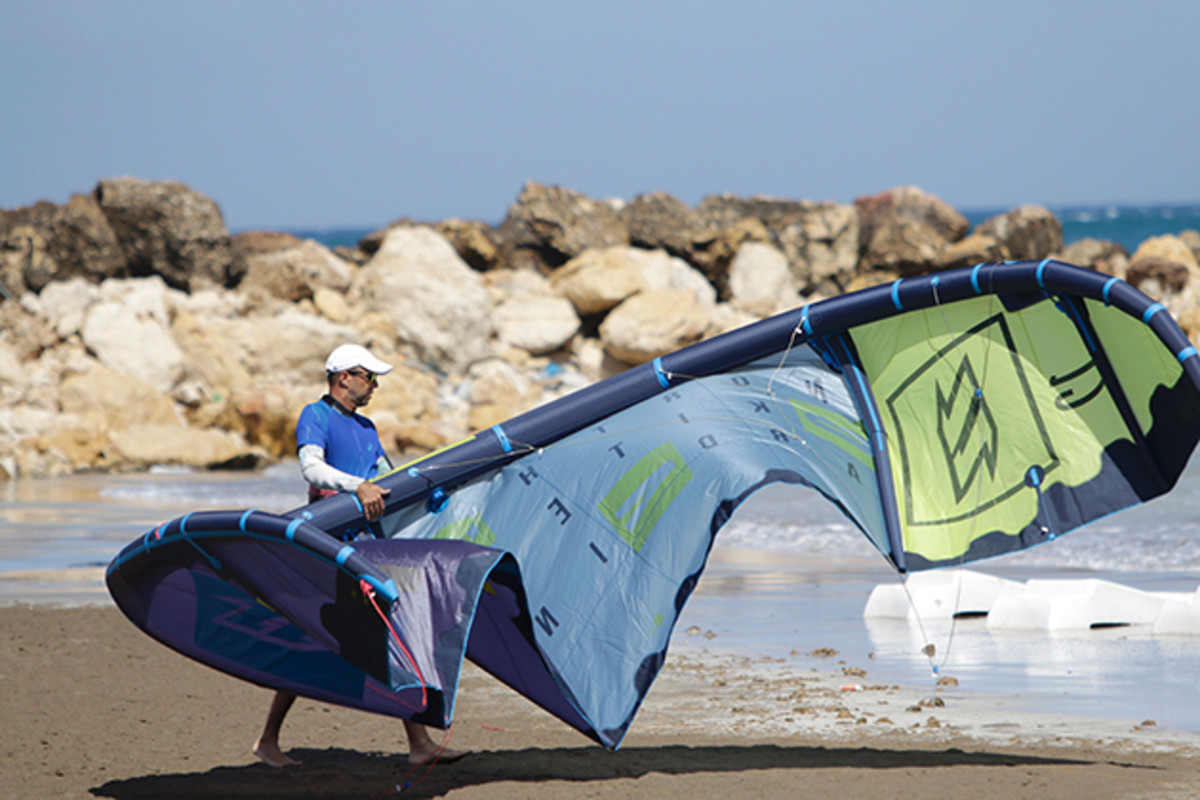
“You just need the wind to ride waves with the kite, put yourself on top of a wave, ride it, release the power out of the kite and then ride the wave like a surfer. When the wave is done, you use the kite to put yourself onto the next wave,” says top kiteboarder Constantin Bisanz. (In 2011, he set a world record kitesurfing from Alaska to Russia across the Bering Strait.)
• Pikes Peak all-time record holder Carlin Dunne on Race to the Clouds
What’s more, for advanced kiteboarders, the wind let’s you catch serious air. “You have the freedom to jump 10, 20, 30 feet off the water, even without the use of a wave,” explains kiteboarding instructor Nick Brouwer, owner Nix Kite Curaçao.
Like many kiteboarders, Brouwer got into the sport after looking for an alternative to windsurfing. “I had windsurfed for many years, but I didn’t like all of the bulky equipment. It was hard to travel with. In kiteboarding, it’s easy to pack up the kite, harness, and board, and ride waves all over the world.”
Sculpt Your Body on the Water
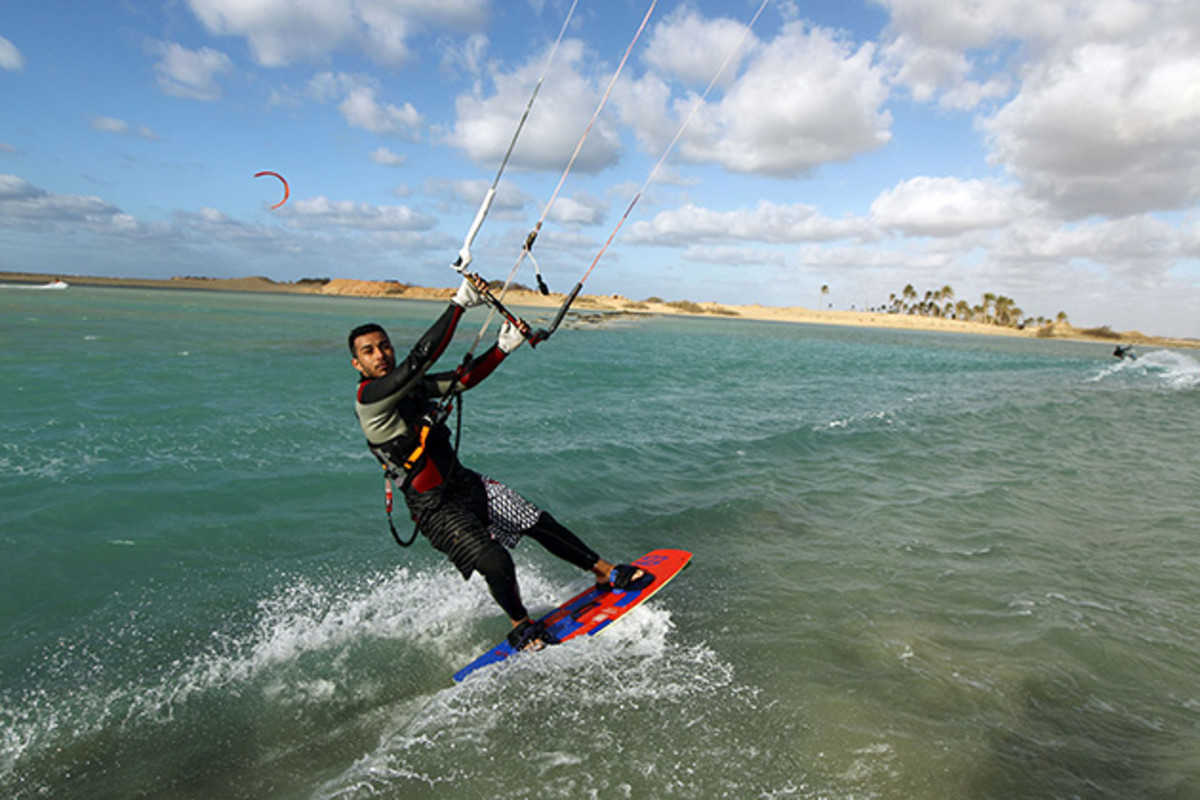
If the adrenaline swells alone aren’t enough to sell you on kiteboarding, the total-body benefits should be.
“I was shocked how sore my abs were after my first time riding a kiteboard,” says exercise physiologist and recreational kiteboarder Mike T. Nelson, Ph.D., C.S.C.S. That’s because successful kiteboarding is all about stability and control when faced with crashing waves and intense winds. To stay up on the board, you have to put your core’s stabilizing muscles into overtime while changing your leg and arm positioning to adapt to the elements and propel yourself where you want to go.
• Innovation in Hydration: How CamelBak became a military essential
“When I’m on a trip, I will go out and ride for three to four hours at a time. For some people, that’s a long time. For some, that’s short. But the amount of exercise you get in that time is great. And you don’t even feel like you’re exercising,” he says.
Luckily, despite all of the fitness benefits of kiteboarding, you don’t have to be crazy strong or aerobically fit to pick up the sport, Brouwer says. As long as you have good mobility and overall health, everyone from children to adults in their 80s can participate. So don’t let that intimidate you.
Catch Some Air

Still, contrary to what most first-time kiteboarders expect (or maybe just hope) you typically don’t ride waves, or even get up on the board, during the first lesson, Brouwer says.
It’s a bummer, but kiteboarding is a sport of skill, and you’ve got to get those skills down before you can successfully get up on that board. In fact, reputable kite instructors (make sure that when learning the sport, you are going through a school that is affiliated with the International Kiteboarding Association) usually won't even take out the board until partway into the second lesson, he says.
• How blood biomarker analysis can help plan meals, boost performance
It typically takes three lessons, each lasting about two hours, to get licensed as a kiteboarder—which means you are certified to kiteboard on your own without the supervision of an IKO instructor. People who want to get up on the board ASAP (who doesn’t?) can fit a couple of lessons into a single day and master the basics of kiteboarding and get your license within a few days to a week, he says. Once you have your license, you can practice on your own, getting up on the water whenever you want to hone your skills and accomplish new on-the-water feats, Bisanz says.
During the first lesson, you practice flying the kite on the beach and in the water during what’s called “body dragging.” It sounds bad, but it’s actually fun; it simply involves steering the kite so that the wind pulls you through the water while you float on your side.
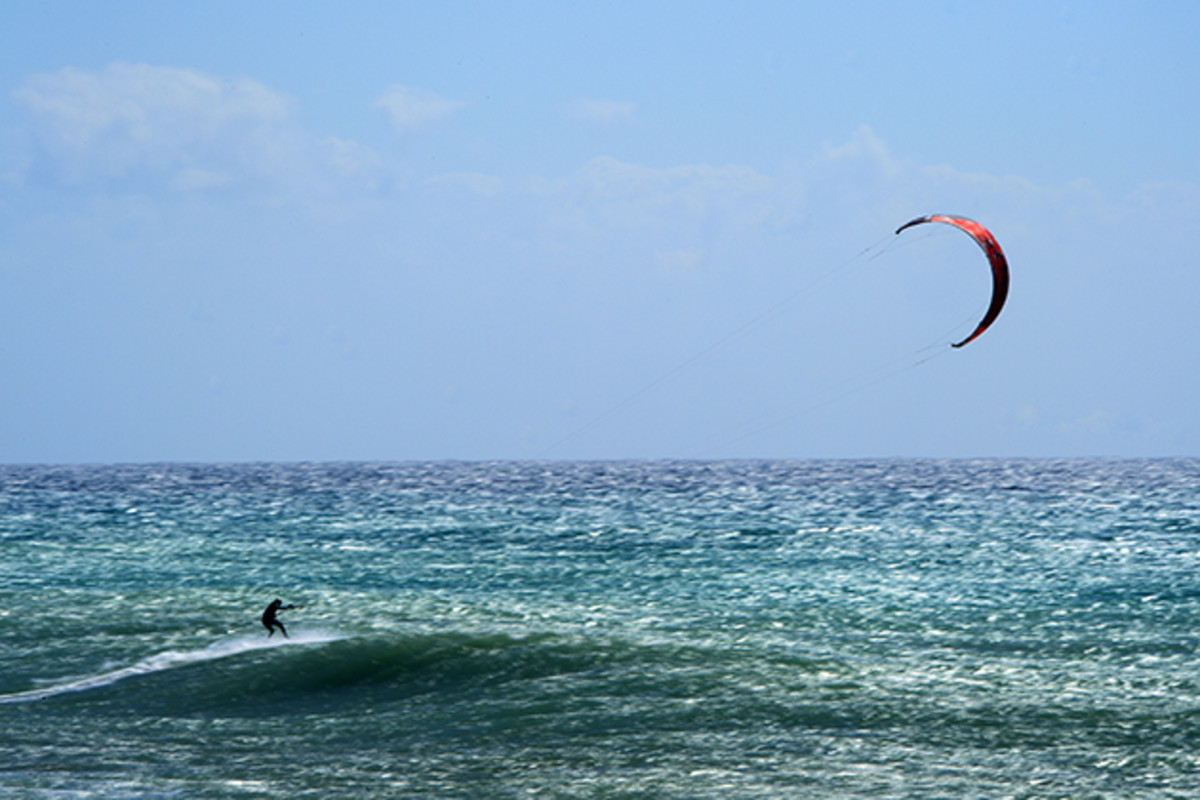
Still, don’t be surprised if your first session is a bit, well, messy, Bisanz says. A lot of people are really bad their first time out, and can get frustrated. Meanwhile, some just get overly excited or happy which causes people to tug on the bar that controls the kite when they shouldn’t. “Kitesurfing can be a vicious cycle of emotions the first time out, but the learning curve is short. Stay relaxed and you will do well,” Brouwer says.
During the second lesson, you perform body dragging with less help from the instructor, try getting up on the board, and may even be able to ride for a few seconds at a time. During the third lesson, you learn how to ride more consistently, and hone in on controlling riding speed and direction. That third lesson is what kiteboarding is all about.
“I usually tell people that if they like their first lesson, they can’t quit until you get up on the board for a few seconds,” Nelson says. “Once you get up, you get addicted to that feeling.”
5 kiteboarding spots to add to your summer travel itinerary
These locales—from your own back yard to halfway around the world—are perfect for kiteboarders of all levels.
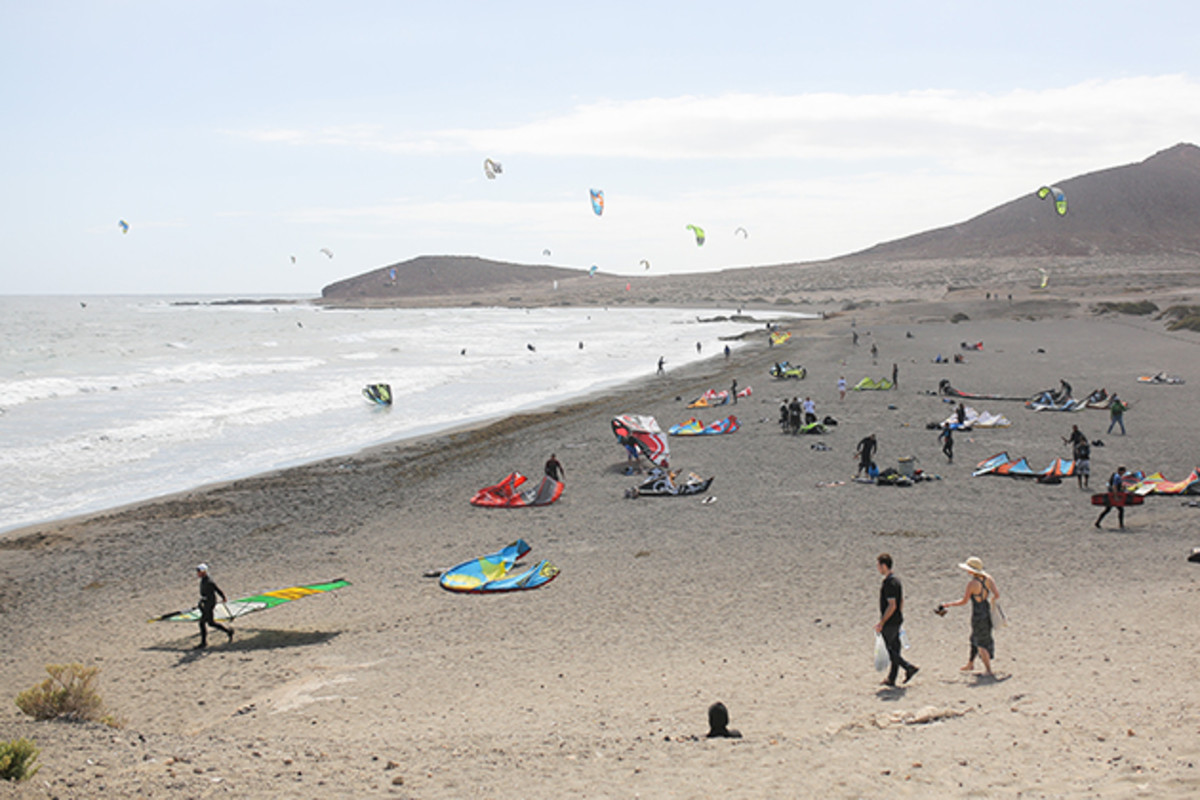
Tarifa, Spain: A mecca for kiteboarders around the world, Tarifa is situated at the southernmost tip of Spain at one end of the Straight of Gibraltar, and is consistently pounded with some of the world’s most intense winds. Every kiteboarder should aspire to harness these winds.
Curaçao: 40 miles off the coast of Venezuela, this island boasts some of the most consistent winds in the Caribbean. And while the island has more open water than any kiteboarder would know what to do with, St. Joris Bay, where Brouwer teaches lessons, is the most popular kiteboarding spot of the island. Since the bay’s strong winds run perpendicular to the bay, kiteboarders ride toward the shore, and you know you’ll never have to struggle to get back to basecamp.
The Great Lakes: This is no joke. The Great Lakes are secretly awesome for kiteboarding. Plus, they are easily accessible to people who can’t just dart off to the tropics on a regular basis. Grand Haven in Michigan as well as Lake Huron’s Tawas State Park are two of the most popular spots among professionals, but there is no end to the opportunities to kiteboard. City dwellers can even take care of Chicago’s famous winds at sites including Montrose Beach. (Just look online for kiteboarding rules and regulations before heading out.)
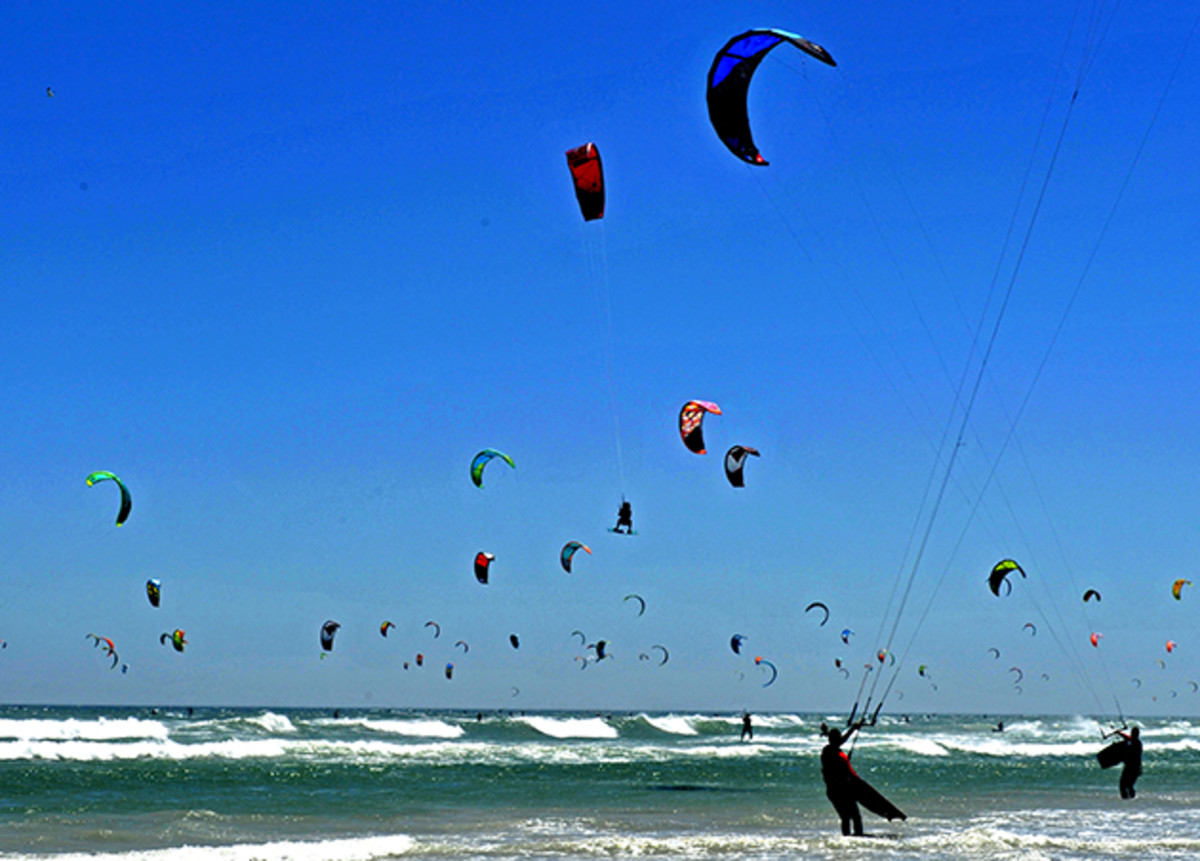
Maui, Hawaii: Seriously, what isn’t better on the Hawaiian island? “Maui’s one of my favorite places in the world to kitesurf,” Bisanz says. “It’s a perfect combination of really strong winds, great waves, and beautiful nature.” The availability of kiteboarding spots of instructors on the island is endless, and many resorts either partner with kiteboarding schools or offer on-property lessons.
Cape Town, South Africa: Near the southern tip of Africa, Cape Town’s forceful waves and winds make it ideal for watersports addicts looking for a fix, Bisanz says. Plus, wildlife lovers will flip over all of the penguins and seals that hang out in Cape Town’s waters. Local kiteboarding instructors can get you situated in the right waters for you, as winds, weather, and the best kiteboarding spots change frequently around the African coast.
